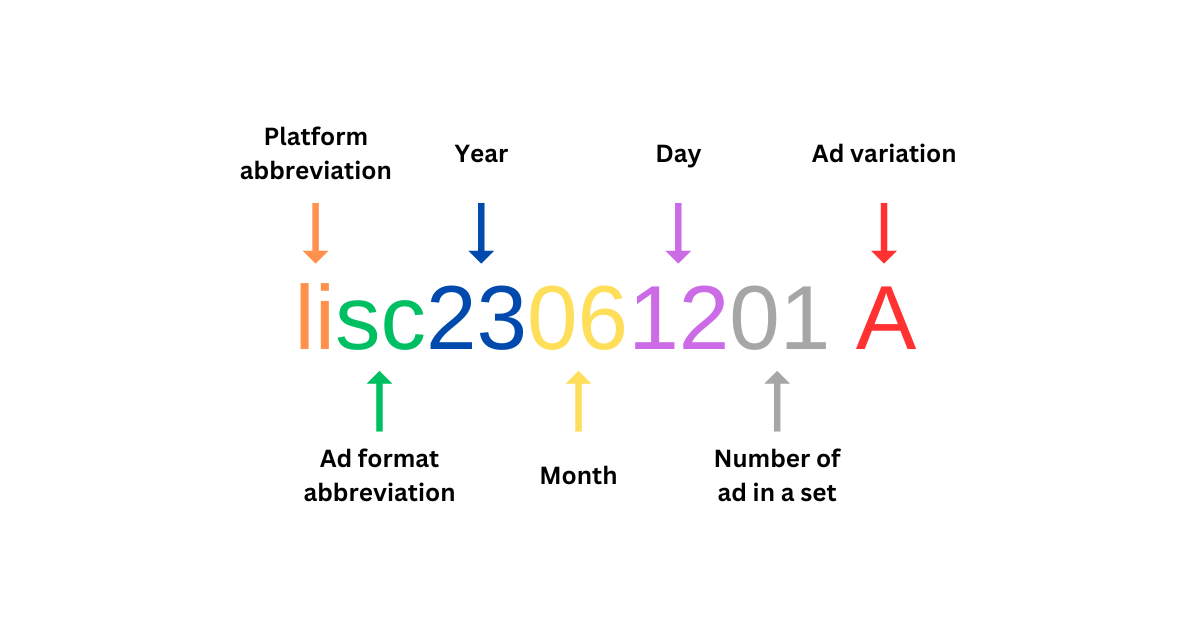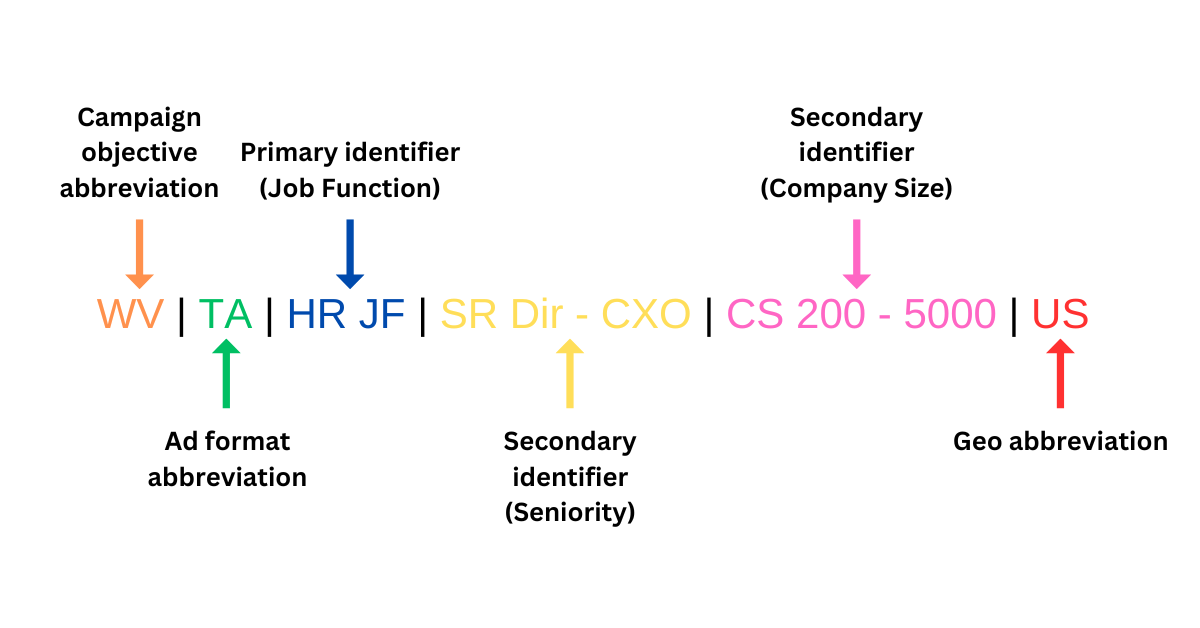It doesn’t matter what ad platform you’re using, when analyzing and reporting on performance, you want data that will offer insights and drive informed decisions.
LinkedIn Ads is no different.
But did you know that you can gain deeper insights on the platform just by the way you set up your ad account?
Here are 3 simple tips for LinkedIn Ad account setup that will make data analysis even more powerful.
Differentiate Ad Variations in the Ad Name
If you’re testing between multiple ad variations, you want to quickly be able to tell which ad is performing best in comparison.
An easy way to do this is by signifying which ad variation is which in your naming convention.
For example, include an “A” when naming one ad, and then a “B” in another ad, and so forth.
We like to give a unique identifier to every ad we create, so our ad names often include an abbreviation of the platform we’re advertising on, an abbreviation of the ad format we’re using, the date an ad was launched, the number of ad that was launched on that date (if launched in a set), and the variation of ad.

When naming your ads in this way, whether you’re analyzing the data in Campaign Manager or in an Excel pivot table, you can filter by the letter associated with each ad variation, making reporting on A/B tests much easier.
Name Campaigns Based On Your Audience Targeting
From accounts that we’ve audited and managed, we’ve seen a lot of campaigns named after things like the offer being promoted or the date a campaign was created.
These might be something like “Webinar – May 2021” or “Best Sales Email Templates eBook”.
As a best practice, it’s best to keep campaigns evergreen to avoid the clutter and hassle of having to create a new one every time you want to promote a new offer or launch some new ads.
Making your target audience the emphasis of a campaign, rather than the offer or a date range, keeps campaigns evergreen.
Not only that, but it makes reporting on audience performance quick and easy, as well.
When naming campaigns, we recommend including the objective, ad format, and targeting details in each campaign name.
For example, from the campaign name below, I can see that this campaign is using the Website Visits objective, is promoting Text Ads, and is targeting those with an HR job function, level of seniority from Director to CXO, who work at companies sized between 200 – 5000 employees, and live in the US.

The beauty of naming campaigns in this way is that you can know who you’re targeting within any given campaign without even needing to open it.
This means you can analyze and report on how each of your audiences is performing at a glance.
Micro-Segment Your Target Audience
This brings us to our next tip.
Keeping all your audience targeting clumped into one or two campaigns doesn’t offer many insights.
That’s because it’s difficult to know at a glance which audience segment drove performance up or down.
If you had an average cost per conversion of $150, for example, one micro-segment could be generating conversions at $50, while another at $250, and you would never know.
Mind you, you can get this sort of data by using LinkedIn’s Demographics tool, but not as promptly as you would if your audience were to be micro-segmented.
So what does micro-segmentation look like?
Micro-segmenting your audience starts with deciding what targeting criteria you want to test between.
For example, instead of targeting all company sizes in one campaign, test different company size ranges across multiple campaigns.
Or instead of targeting 5 different industries in a single campaign, break these industries up between multiple campaigns.
The trick is to change the variable you want to test in each campaign, while leaving all else in your targeting the same across them all.
The result is focus group-level insights because you’re testing your audience’s behavior in a controlled way.
But what’s data analysis without optimization?
Another benefit to micro-segmentation is that you also have greater control over how you optimize based on your audience targeting.
If you find that one or two campaigns are performing better than others, you can capitalize on those that are doing well and cut out those dragging overall performance down.
For more on audience micro-segmentation strategy, check out this episode of the LinkedIn Ads Show.
Conclusion
The way you set up your LinkedIn Ad account can greatly expand the type of data you can collect and the optimizations you can make.
These kinds of optimizations drive greater efficiency on a platform criticized for its high costs, which can make a significant difference in the long run.
Are there any account organization tips you would add to this list? How has implementing these changes affected your ad performance? Comment below!
Our mission is to help 20K marketers, business owners, and recruiters decrease costs and increase scale on LinkedIn Ads.
If you don’t have the time, resources, or know-how to manage it all on your own, consider booking a discovery call with us.
We’d absolutely love the chance to get to work with you!
Written by Eric Jones



Recent Comments